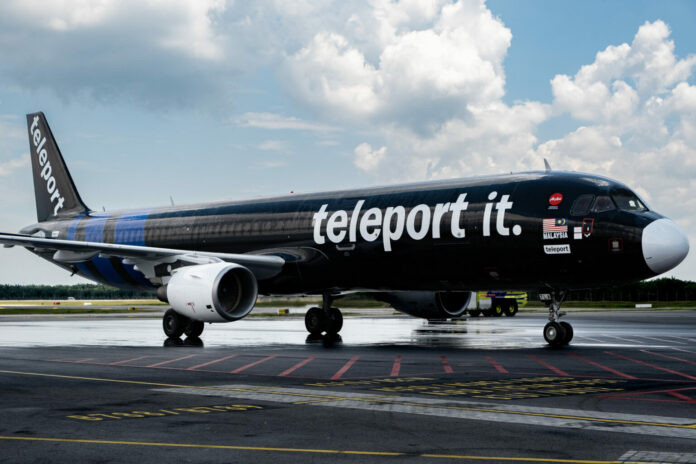

The airfreight industry in Southeast Asia is experiencing notable growth, driven by rapid economic development and the region’s strategic location as a global trade. However, increased opportunity brings greater competition.
When Covid hit, e-commerce emerged as a dominant trend in spending, consistently increasing month by month. Strategically positioned in South Asia, Teleport has been working to pull shipments from China into Southeast Asia feeding into their consolidated Airasia network, capturing the market potential offered by this booming segment.
“China is strong, Hong Kong is significant. Saigon and Hanoi are crucial markets where Teleport is looking to put more capacity in to boost the market. India has been growing very quickly, offering significant volume,” Francis Antony, of Teleport, outlined. “One of our strategies is to focus on our next day offering by adding the right capacity with the right timing from China to various parts in Southeast Asia and Asia Pacific.”
With rapid growth, Teleport is hoping to expand its reach, not only in Southeast Asia but also Asia Pacific, Europe and the United States using current network and strategic partners.
“Building trust and capabilities is our main focus, but we’ve been fortunate to witness support not only from the cargo segment but also from the rapidly growing e-commerce sector. We’ve even set up a dedicated team to complement our existing capacity, and this approach is proving to be quite successful.”
READ: Teleport by AirAsia returns to China
Freighter takes flight
Teleport welcomed its first dedicated freighter to the fleet, an Airbus A321 passenger-to-freighter (A321 P2F), in July last year, looking to move into a new phase of growth. Within the next 24 months, Teleport is aiming to have up to ten freighters, as they aim to complement their passenger bellyhold cargo approach.
The choice of a converted aircraft over a purpose-built freighter was primarily driven by specific needs. Teleport required Short Development Range (SDR) for routes from other hubs, eliminating any widebody freighters. Opting for a different fleet would also have entailed complexities around their crewing and maintenance.
The available option, an Airbus A321 freighter, was chosen due to its unique design. The top part accommodates unitised shipments, catering to customers who prefer componentised cargo. Post-pandemic manpower shortages at airports made unloading and loading cargo a challenge, so the A321’s efficiency in handling cargo with minimal manpower was a critical factor.
Having freighters enables greater control over flight routes. Unlike passenger airlines that are restricted to point-to-point destinations, Teleport can employ triangular routes, optimising the aircraft’s utilisation. This flexibility is crucial in dictating flight schedules and cargo pickups.
“With the freighter, we will be able to handle special cargo such as dangerous goods, odd-sized items, live animals, etc. These are some of the limitations with the passenger aircraft, which are very good for carrying small and loose e-commerce parcels,” Antony explained. “Additionally, we will have better control over our flight network, ensuring reliability and flexibility in serving our customers and meeting the growing demand within the region.”
Relationship with rivals
Riding the wave of regional opportunity, Teleport is looking to build on its already substantial network. Despite serving 240 destinations, the logistics provider recognises the need for expansion and accelerated growth.
Instead of fighting it out for chunks of the market, Teleport is looking to shift away from the traditional competitive mindset to one of complementarity. With the goal of maximising utilisation, particularly in sectors where they currently do not operate, Teleport is looking to build partnerships with other carriers to fill the gaps in its network.
Instead of dwelling on rivalries, the cargo handler sees these partnerships as a chance to enhance each other’s strengths and drive collective success for their businesses and the regions.
A recent example of this strategy in action is the collaboration with Garuda. By identifying and filling empty segments like Denpasar to Australia, Teleport not only improved load factors but it also contributed to the overall growth of both businesses.
READ: Teleport unveils a321F
Shift in strategy
In the past 18 months, looking at how it can secure its standing in the region, Teleport has undergone a significant shift in its strategic focus to become more engaged directly with customers and its operations.
Previously, Teleport heavily relied on third-party channels, lacking direct interaction with global freight forwarders. Recognising this gap, they have initiated a targeted effort to rectify this.
The initial challenge lay in establishing direct relationships, so Teleport systematically secured appointments in each country where they operated. This process was intricate, involving compliance with regulations and navigating regulatory hurdles.
Being known in the market as a low-cost, procedure-centric airline with a focus on passenger capacity, Teleport is looking to adapt and evolve to cater to global customers.
“We are working with strategic partners that will unlock some capacity that we actually need to distribute,” Antony stated. “We are aggressively talking to customers and airlines to grow the segments and reach out even further beyond the AirAsia network.”










